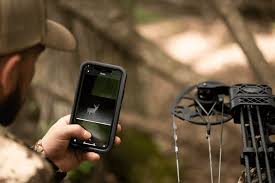
Unveiling the Stealthy Observer: A Comprehensive Guide to Trail Cameras
Trail cameras have revolutionized wildlife observation, hunting camera outdoor photography, and even home security. These compact, motion-activated devices offer a unique glimpse into the natural world, capturing elusive moments that might otherwise go unnoticed. In this article, we delve into the world of trail cameras, exploring their functionality, benefits, and practical applications.
What is a Trail Camera?
A trail camera, also known as a game camera or wildlife camera, is a rugged, weatherproof device equipped with a motion sensor and a built-in camera. These cameras are typically used to monitor wildlife activity in remote areas, capturing photos or videos when triggered by movement. Originally developed for hunting purposes, trail cameras have found widespread use in scientific research, nature photography, and home security.
How Do Trail Cameras Work?
Trail cameras operate on a simple principle: motion detection triggers the camera to capture images or videos. When an animal or person enters the camera’s field of view, the motion sensor detects the movement and activates the camera. Most trail cameras are equipped with infrared or LED flash, allowing them to capture clear images even in low-light conditions or at night.
Key Features of Trail Cameras:
- Resolution: Trail cameras are available in a range of resolutions, from basic models offering standard definition (SD) images to high-end cameras capable of capturing crystal-clear, high-definition (HD) photos and videos.
- Detection Range: The detection range of a trail camera determines how far away it can detect motion. Higher-end models often boast longer detection ranges, enabling them to cover larger areas effectively.
- Trigger Speed: The trigger speed refers to the time it takes for the camera to capture an image after detecting motion. Faster trigger speeds ensure that the camera captures the subject in motion without delay.
- Battery Life: Since trail cameras are often deployed in remote locations, long battery life is essential for extended surveillance periods. Many models offer impressive battery life, while others are compatible with external power sources such as solar panels.
- Memory Capacity: Trail cameras use internal memory or removable SD cards to store photos and videos. Models with larger memory capacities can store more images and footage before requiring data offloading.
Applications of Trail Cameras:
- Wildlife Monitoring: Trail cameras are widely used by biologists, ecologists, and conservationists to study animal behavior, population dynamics, and habitat usage.
- Hunting: Hunters use trail cameras to scout for game, track movement patterns, and monitor potential hunting spots.
- Home Security: Trail cameras serve as effective security devices, capturing images or videos of intruders or wildlife trespassing on private property.
- Nature Photography: Nature enthusiasts and photographers use trail cameras to capture stunning images of wildlife in their natural habitat, providing unique insights into the natural world.
Conclusion:
Trail cameras offer a fascinating window into the hidden world of wildlife, allowing us to observe and document nature’s wonders with unprecedented clarity. Whether for scientific research, hunting, home security, or photography, these versatile devices continue to play a vital role in our understanding and appreciation of the natural world.
